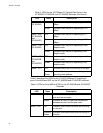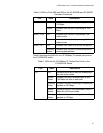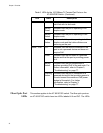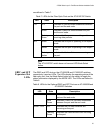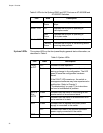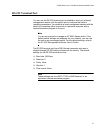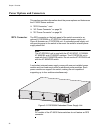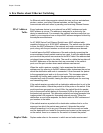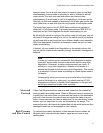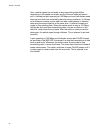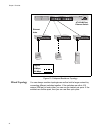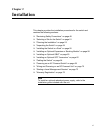
Chapter 1: Overview
40
A Few Basics about Ethernet Switching
An Ethernet switch interconnects network devices, such as workstations,
printers, routers, and other Ethernet switches, so that they can
communicate with each other by sending and receiving Ethernet frames.
MAC Address
Table
Every hardware device in your network has a MAC address and each
MAC address is unique. The address is assigned to a device by the
device’s manufacturer. For example, the network interface cards that you
install in your computers have a unique MAC address assigned to them by
the adapter manufacturers.
An AT-8500 Series Fast Ethernet Switch has a MAC address table
capable of storing up to 8,000 MAC addresses. The switch uses the table
to store the MAC addresses of the network end nodes connected to the
ports, along with the port number on which each address was learned.
A switch learns the MAC addresses of the end nodes by examining the
source address of each packet received on a port. It adds the address and
port on which the packet was received to the MAC table if the address had
not already been entered in the table. The result is a table that contains all
the MAC addresses of the devices that are connected to the switch’s
ports, and the port number where each address was learned.
When the switch receives a packet, it also examines the destination
address and, by referring to its MAC address table, determines the port on
which the destination end node is connected. It then forwards the packet
to the appropriate port and on to the end node. This increases network
bandwidth by limiting each packet to the appropriate port when the
intended end node is located, freeing the other switch ports for receiving
and transmitting data.
If the switch receives a packet with a destination address that is not in the
MAC address table, it floods the packet to all the ports on the switch. If the
ports have been grouped into virtual LANs, the switch floods the packet
only to those ports which belong to the same VLAN as the port on which
the packet was received. This prevents packets from being forwarded into
inappropriate LAN segments, increasing network security. When the
destination an end node responds, the switch adds its MAC address and
port number to the table.
If the switch receives a packet with a destination address that is on the
same port on which the packet was received, it discards the packet
without forwarding it on to any port. Because both the source end node
and the destination end node for the packet are located on the same port
on the switch, there is no reason for the switch to forward the packet.
Duplex Mode Duplex mode refers to the manner in which an end node receives and



